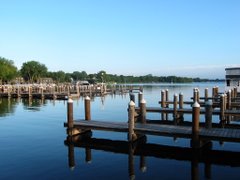In a recent column, I argued it is time for a comprehensive management plan for managing aquatic plants (nuisance plants, invasive plants and native plants) for Lake Minnetonka. Here I use ‘weeds’ as a familiar term to most people, however, I am referring all plants – those that might require control, those that require protection and the balance between the two.
At this time, we know several things that compel use to be forthright and strategic:
• Milfoil is a scourge that can be controlled on a bay-wide basis
• Flowering rush has the potential to become problematic lake-wide
• New invasive plants are nearing Lake Minnetonka – hydrilla, Brazilian waterweed, etc.
• Native plants are abundant and important to protect
• There has never been a comprehensive plant management plan or program for Lake Minnetonka
• All past and current management efforts have been implemented piecemeal
• The desire to control invasive plants is heard lake-wide
We have tended to focus on milfoil, but we need a plan that is broadly focused on all aspects of plant control and protection. However, even our milfoil programs can be improved.
Many aspects of the plant management programs now in place are lacking. Milfoil is a huge problem and the harvesters cut a small portion on a schedule out of sync with the boating season. The newest invasive plant, Flowering rush, has been largely ignored since its discovery three years ago – it continues to spread with no agency monitoring its spread much less attempting to contain it. No agency has taken the lead in managing plants in the lake – rather it is left to a hodgepodge of individuals and several organizations and agencies.
Improvements can be made. While not yet complete, the five-bay milfoil program has demonstrated the use of selective herbicides as a safe, viable tool. Indeed, the most recent treatments to four bays (Grays has not yet been treated this season) have shown milfoil to be substantially gone and many native plants remain healthy. On a per acre basis, these herbicide treatments are comparable in cost to the harvesting program – plus herbicides control milfoil early in the season and lasts for multiple seasons. This compares to the harvesters, which do not get to many areas of the lake until late in the season, require the ownership and maintenance of capital assets, kill thousands of fish and generate milfoil fragments for lakeshore owners to clean up. While there may be a role of harvesters in a comprehensive approach, new harvester technologies do not address these concerns.
So who should be in charge of managing plants in Lake Minnetonka? The Lake Minnetonka Association believes the Minnehaha Creek Watershed District (MCWD) is best suited to this critical task.
The MCWD is a local water resource management organization that has the required technical expertise, funding capacity and mission for this important task. As well, the MCWD is guided by sound ecological principals in its management plan, so it clearly has the capacity to balance the overall health of the lake with the desires to control nuisance and invasive plants to facilitate recreation.
Other watershed districts in Minnesota have assumed these responsibilities. For example, the Pelican River Watershed District manages invasive plants in the lakes in their district. Their program is paid for by a small levy to properties in the watershed.
The Lake Minnetonka Conservation District (LMCD) would appear to have a sufficient charter, but has never really embraced a comprehensive approach to managing plants. Indeed, the LMCD’s harvesting program’s main objective is to facilitate navigation and it is questionable to what extent this is accomplished as no program evaluation has ever been conducted. In addition, the LMCD lacks technical staff and does not have the fiscal capacity to enlarge its already small program – the harvester program cuts about 300 acres per season compared to an estimated 3,000 to 5,000 acres of milfoil in the lake.
The Lake Minnetonka Association has been proud to serve as project manager for the demonstration project and we are also proud of our members for providing the majority of funding for this project. However, this should not be our job in the long run. Following the completion of the five-bay milfoil demonstration project in 2012, we would expect a comprehensive aquatic plant management program to be assumed by a competent local agency. We think that job belongs to the MCWD.
Wednesday, July 20, 2011
Subscribe to:
Post Comments (Atom)


No comments:
Post a Comment